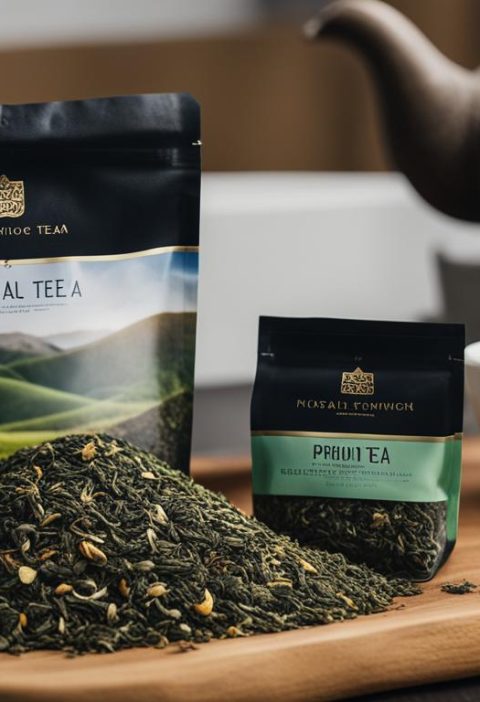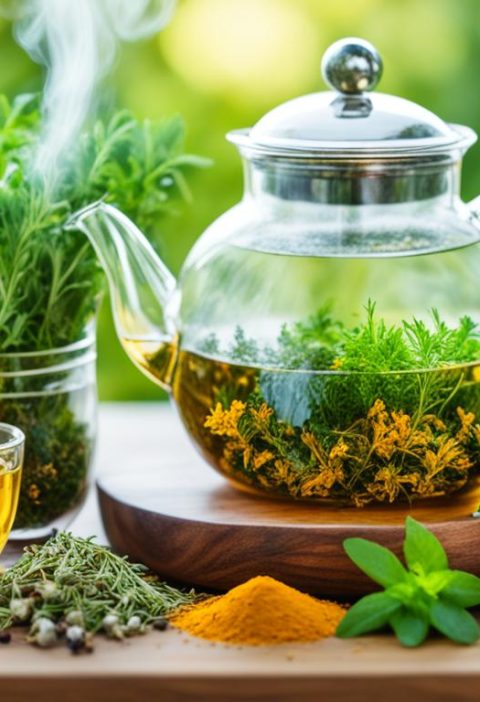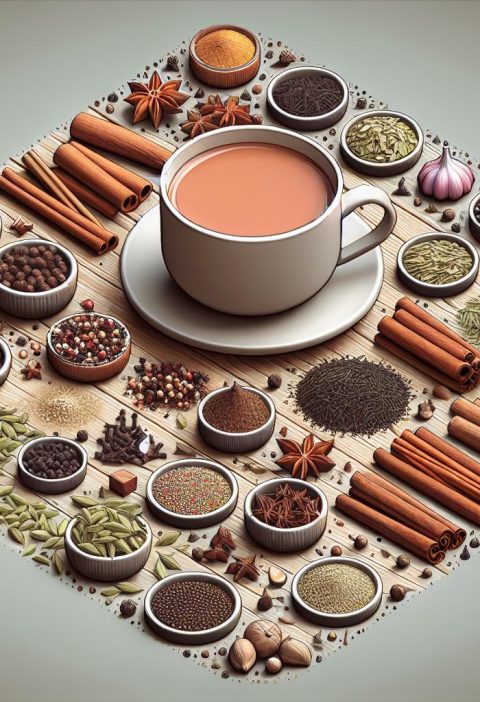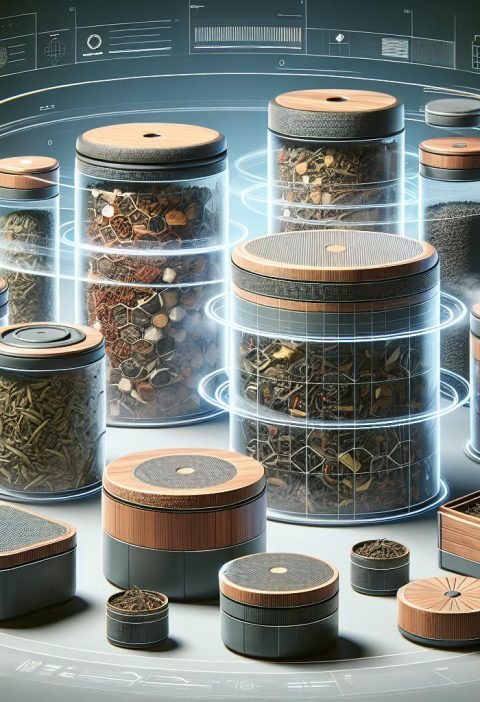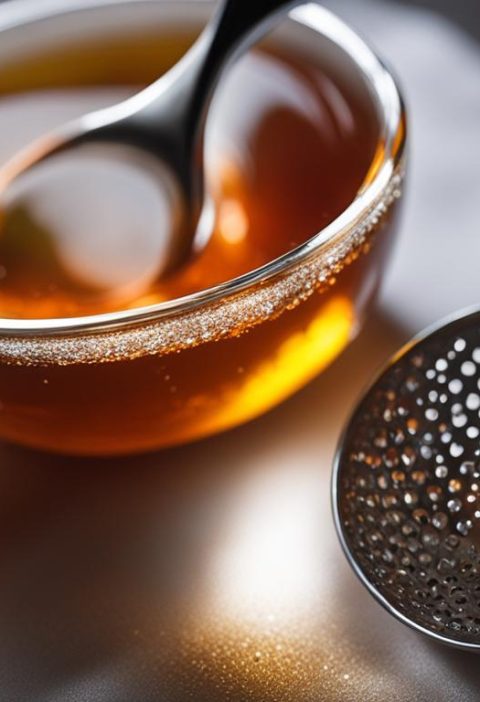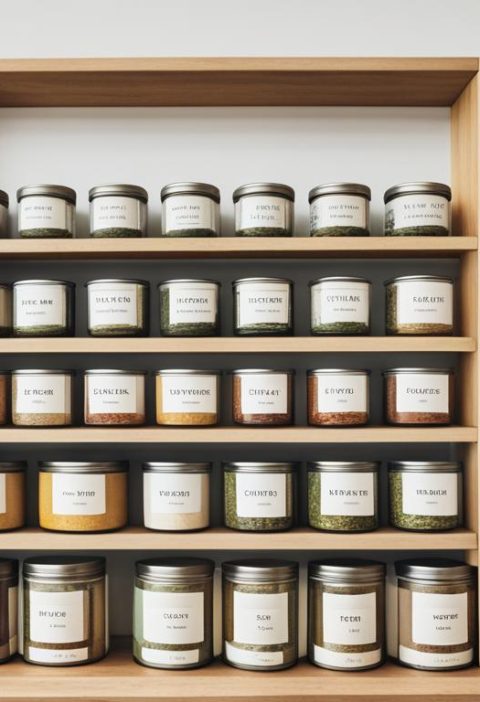So, you’re ready to dive into the wonderful world of custom tea blends! Creating your own unique tea blends can be a rewarding and enjoyable experience that allows you to tailor flavors to suit your preferences. Whether you’re a tea enthusiast looking to experiment or a tea business owner seeking to offer exclusive blends, we’ve got you covered with expert tips and tricks to elevate your tea game.
When it comes to crafting custom tea blends, the possibilities are endless. From selecting the base teas to adding complementary herbs, spices, or floral notes, the key lies in finding the perfect balance of flavors. Our comprehensive guide will walk you through the essential steps of tea blending, helping you unlock the secrets to creating harmonious and flavorful blends that cater to your taste buds. Let’s embark on this tea blending journey together and unleash our creativity in the world of bespoke teas.
Choosing the Right Base Teas
When it comes to crafting the perfect custom tea blend, selecting the right base teas is a crucial first step. We understand that this decision sets the foundation for the entire blend, impacting its flavor profile and overall character. Here’s a breakdown to help you navigate through choosing the best base teas for your masterpiece:
For Beginners: Mastering the Basics
- Start with familiar varieties: Opt for widely loved teas such as green tea or black tea as your base to ease into the blending process.
- Experiment with single origins: Explore different options like Assam or Dragonwell to understand the unique characteristics they bring to the blend.
- Balance boldness with versatility: Consider a blend of Assam black tea for a strong base complemented by the smoothness of Ceylon tea.
For Intermediate Enthusiasts: Elevating Your Blend
- Blend different tea categories: Mix oolong with white tea for a harmonious blend of floral and semi-fermented notes.
- Explore regional blends: Combine Keemun with Yunnan black tea for a rich, malty flavor profile that adds depth to your blend.
- Incorporate specialty teas: Experiment with unique bases like Pu-erh to introduce earthy undertones and complexity to your blend.
- Dive into rare tea varieties: Source Silver Needle white tea or Gyokuro green tea for a premium and sophisticated base that elevates your blend.
- Consider aged teas: Blend with aged white tea or post-fermented teas like Liu Bao for a distinctive, mature flavor profile.
- Layer and balance: Play with different bases in varying ratios, such as combining Darjeeling with Nilgiri tea, to achieve a well-rounded, multi-dimensional blend.
Selecting Complementary Herbs and Spices
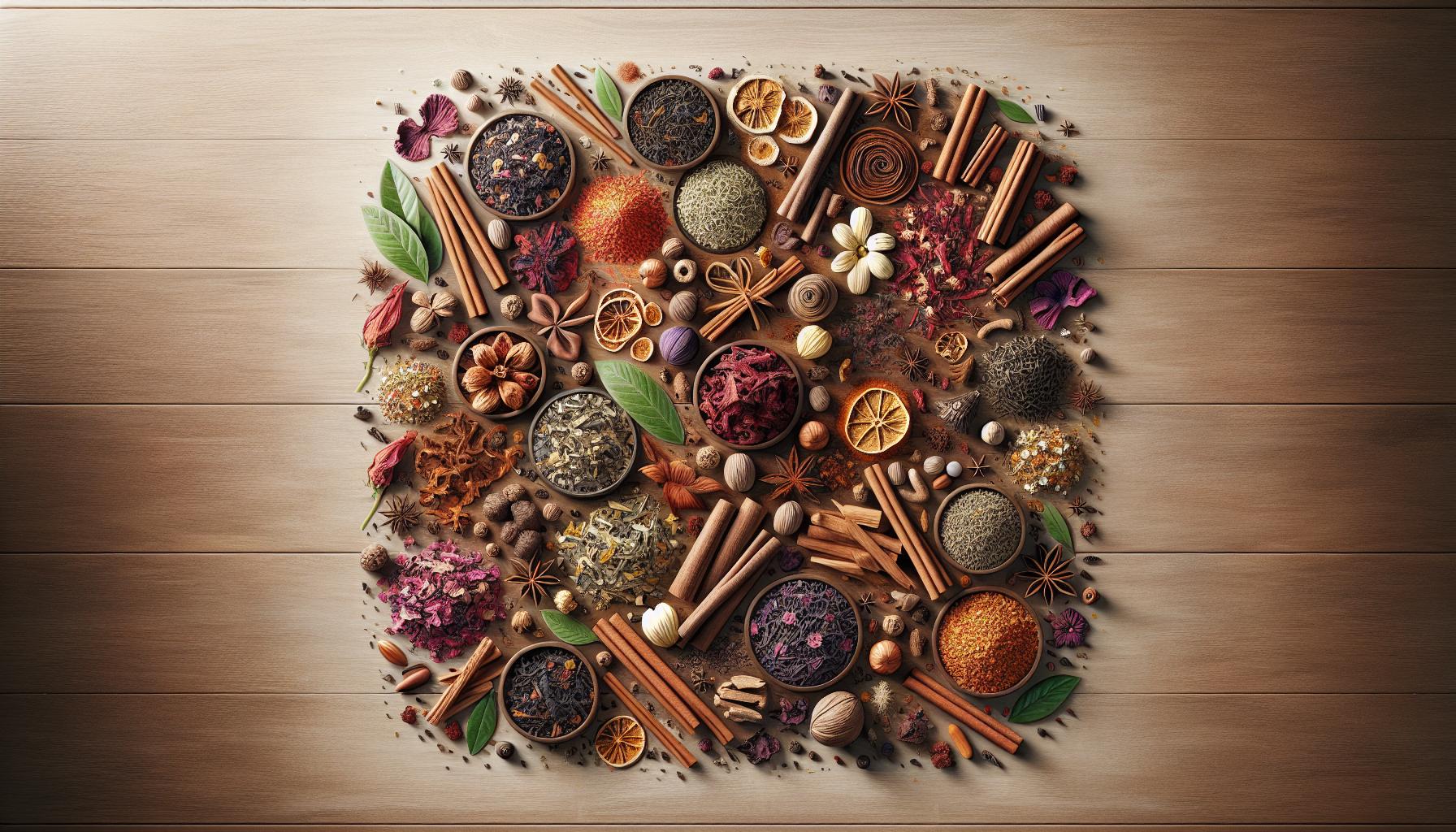
When it comes to custom tea blends, selecting the right herbs and spices is key to creating unique and flavorful combinations. Here are some tips for choosing complementary ingredients based on different experience levels:
For Beginners: Mastering the Basics
- Start with familiar herbs like mint, chamomile, or ginger.
- Experiment with common spices such as cinnamon, cardamom, or cloves to add depth.
- Consider simple blends like chamomile and lavender for a soothing mix.
For Intermediate Blenders: Enhancing Your Blend
- Explore floral options like rose petals or hibiscus for a fragrant twist.
- Incorporate citrus elements such as orange peel or lemongrass for a refreshing note.
- Try herbal infusions like licorice root or echinacea for added complexity.
- Delve into exotic herbs like lemongrass, holy basil, or elderflower for a unique touch.
- Experiment with spicy additions like black pepper, turmeric, or star anise for a bold kick.
- Blend rare spices such as saffron, vanilla pods, or fennel seeds for unparalleled richness.
Remember, the key to a successful tea blend is balance and harmony between the base teas and the herbs and spices. By carefully selecting and layering complementary ingredients, you can create exquisite blends that cater to your palate preferences and elevate your tea experience.
Experimenting with Floral Notes
When it comes to custom tea blending, incorporating floral notes can add a delightful touch to your creations. Whether you are a beginner looking to explore new flavors or an experienced blender aiming to elevate your blends, experimenting with floral elements can offer a unique sensory experience. Here are some tips tailored to different experience levels:
For Beginners: Getting Started with Floral Blends
- Begin by selecting familiar floral options like lavender or chamomile.
- Start with small quantities to understand how floral notes interact with different base teas.
- Balance floral flavors with a milder base tea to avoid overpowering the blend.
For Intermediate Blenders: Elevating Your Creations
- Expand your floral repertoire with rose petals, hibiscus, or jasmine for more complex profiles.
- Experiment with different brewing techniques to extract the optimal flavors from floral elements.
- Consider combining floral notes with citrus elements or mild spices for added depth.
- Explore rare floral options such as osmanthus, elderflower, or cornflower for a sophisticated twist.
- Fine-tune your blends by adjusting the ratios of floral ingredients to achieve the desired intensity.
- Blend floral notes with unique herbs and spices to create signature tea blends that showcase your expertise.
Embracing floral notes in custom tea blending opens up a world of aromatic possibilities. Whether you are a novice eager to experiment or a seasoned professional seeking new inspirations, adding floral elements can elevate your tea blends to captivating heights. Experiment, taste, and let your creativity blossom in every cup of custom tea you create.
Finding the Perfect Balance of Flavors
When it comes to custom tea blending, finding the perfect balance of flavors is essential to creating a harmonious and delightful brew. Whether you’re just starting or already have experience in tea blending, finding the right balance is a crucial step towards crafting a unique and memorable tea blend.
For Beginners: Mastering the Basics:
For those new to tea blending, achieving the perfect balance of flavors may seem daunting at first. Here are some tips tailored to help beginners master the basics:
- Start with familiar floral options like lavender to ease into incorporating floral notes into your blends.
- Experiment with different ratios of floral and base teas to understand how they complement each other.
- Keep it simple by focusing on one or two floral elements at a time to avoid overwhelming the palate.
- Consider adding citrus or herbal accents to balance out the floral flavors in your blend.
By following these beginner-friendly tips, you can gradually develop a sense of how different flavors interact and work together in your tea blends.
For Intermediate Blenders: Enhancing Your Dish
If you already have some experience in tea blending and want to elevate your creations, here are some advanced tips for enhancing the balance of flavors:
- Incorporate more complex floral options such as rose petals or hibiscus to add depth to your blends.
- Play around with brewing techniques like steeping times and temperatures to fine-tune the flavor profile.
- Experiment with combining floral notes with spices or other complementary elements to create unique flavor combinations.
- Explore rare floral options like osmanthus and elderflower to add a touch of sophistication to your blends.
By exploring these intermediate-level strategies, you can further refine your blending skills and create teas that truly stand out.
For Experts: Advanced Techniques and Recipe Development
For seasoned tea blenders looking to push the boundaries of flavor balance, here are some advanced techniques and recipe development ideas:
- Focus on intricate flavor layering by incorporating multiple floral, citrus, and spice elements into your blends.
- Blend teas from different regions to create complex flavor profiles that showcase the diversity of terroirs.
- Experiment with aging your blends to allow the flavors to meld and develop over time.
- Challenge yourself to create signature blends that reflect your unique style and expertise in tea blending.
Tips for Blending and Tasting Tea
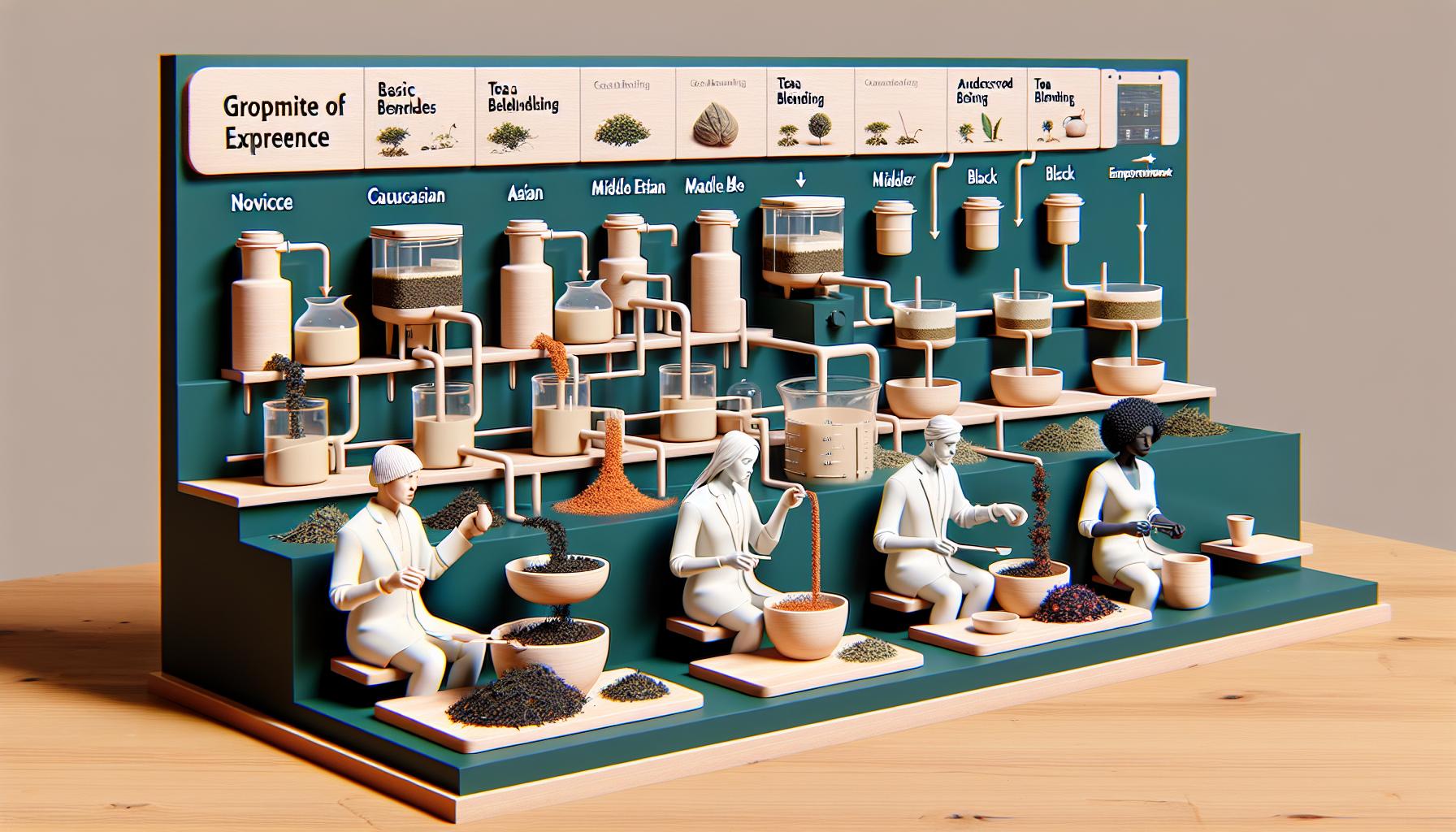
For Beginners: Mastering the Basics
- Start with familiar flavors like lavender.
- Experiment with different ratios to find your preferred taste.
- Gradually introduce citrus elements for a refreshing twist.
For Intermediate Blenders: Enhancing Your Brew
- Incorporate more complex floral choices such as osmanthus and elderflower.
- Experiment with various brewing techniques to extract diverse flavors.
- Explore rare tea options to expand your palate.
- Master intricate flavor layering for a multi-dimensional brew.
- Blend teas from different regions for unique combinations.
- Age your blends to enhance depth and richness.
- Create signature blends that reflect your individual style and expertise.
| Tips for Blending and Tasting Tea |
|---|
| Beginners |
| Intermediates |
| Experts |
Conclusion
In crafting custom tea blends, we’ve explored a spectrum of tips catering to all levels of expertise. From novice to connoisseur, our guide offers a roadmap to unleash your creativity and palate. Starting with familiar flavors, progressing to intricate floral choices, and culminating in masterful flavor layering, each stage unveils a new facet of the art of tea blending. With these insights, we empower you to embark on a journey of discovery, experimenting with ratios, exploring rare teas, and creating signature blends that reflect your unique style. Let these tips be your compass as you navigate the vast world of custom tea blending, elevating your tea experience to new heights.

